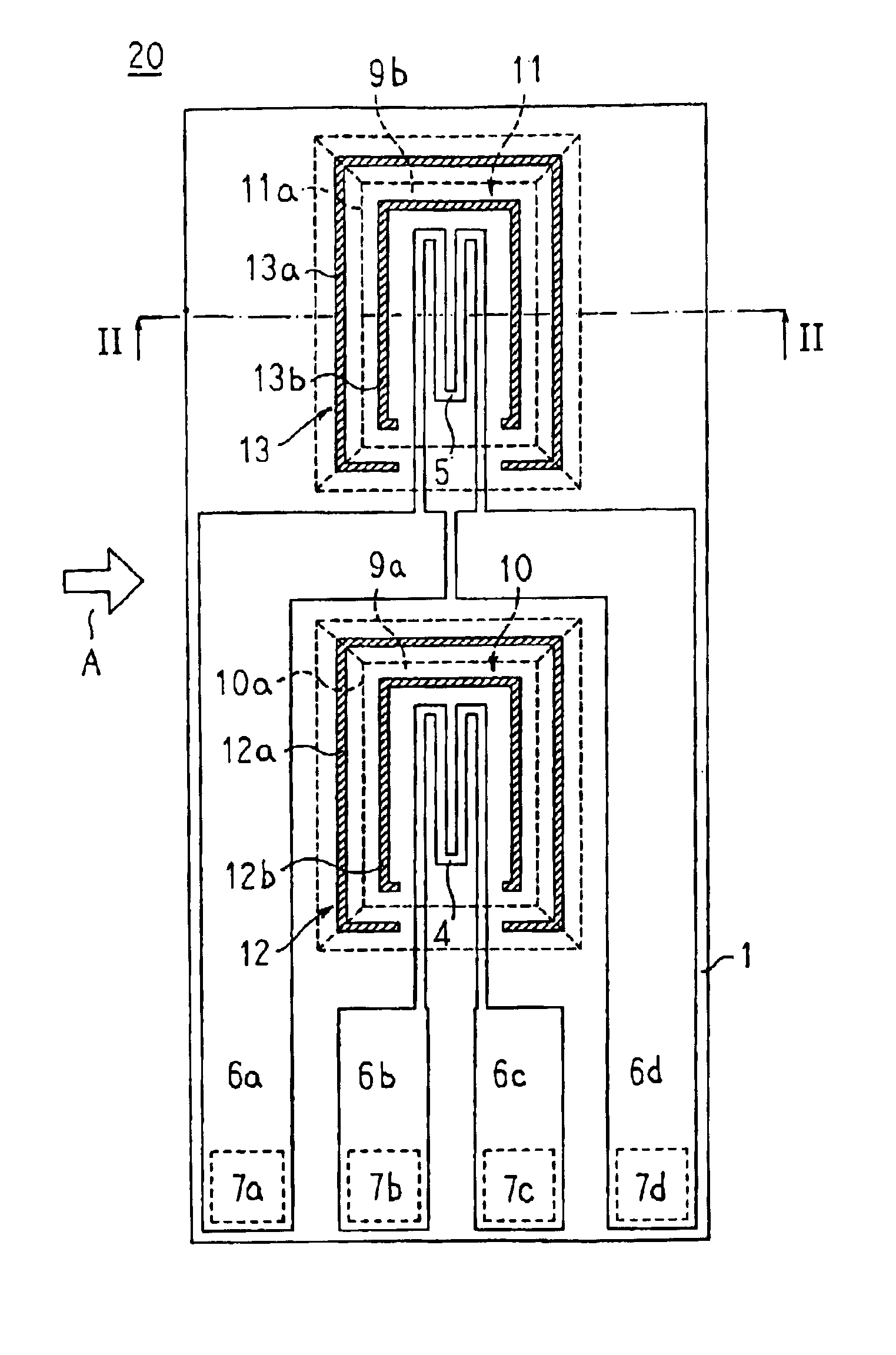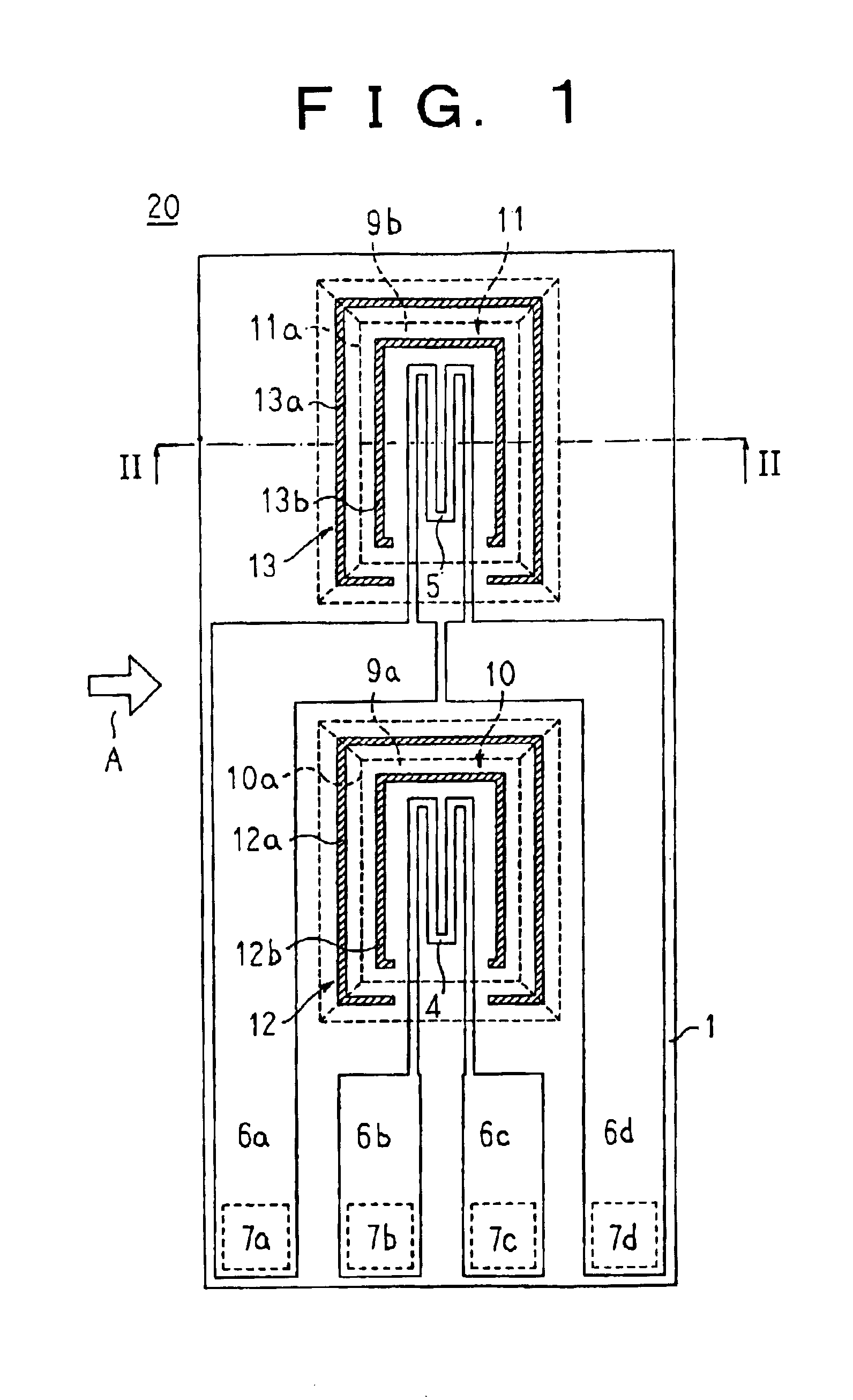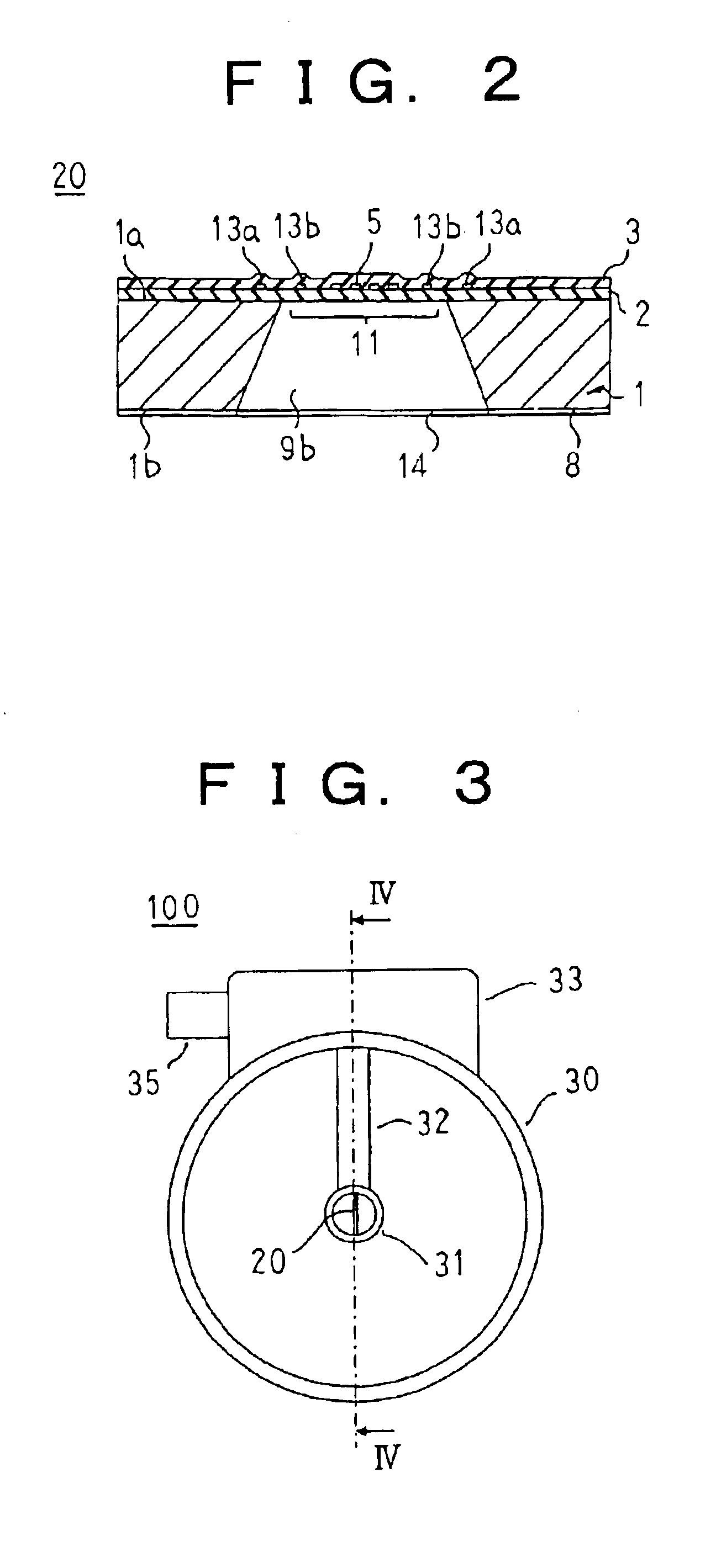Thermosensitive flow rate detecting element and method for the manufacture thereof
- Summary
- Abstract
- Description
- Claims
- Application Information
AI Technical Summary
Benefits of technology
Problems solved by technology
Method used
Image
Examples
embodiment 1
FIG. 1 is a front elevation showing a thermosensitive flow rate detecting element according to Embodiment 1 of the present invention, and FIG. 2 is a cross section taken along line II—II in FIG. 1 viewed from the direction of the arrows. Here in FIG. 1, a direction of flow of a fluid being measured relative to the flow rate detecting element is indicated by an arrow A, and in order to make the construction easier to see, a protective layer has been removed. Furthermore, in order to make the construction easier to see, FIGS. 1 and 2 are not drawn to actual scale. Moreover, the same applies to each of the figures below.
In FIGS. 1 and 2, an electrically-insulating support film 2 is formed over an entire front surface 1a of a flat substrate 1 made by silicon, a resistance heater 4 functioning as a resistor made by a thermosensitive resistor film, a fluid temperature resistance thermometer 5 functioning as a resistor, first to fourth lead patterns 6a to 6d, a resistance heater dummy patt...
embodiment 2
FIG. 12 is a front elevation showing a thermosensitive flow rate detecting element according to Embodiment 2 of the present invention.
In a thermosensitive flow rate detecting element 20A according to Embodiment 2, as indicated by hatching in FIG. 12, first patterns 16a and 17a formed outside four edge portions 10a and 11a of the first and second diaphragm portions 10 and 11 so as to lie alongside the edge portions 10a and 11a are formed on the patterns of first to fourth lead patterns 15a to 15d. Second patterns 16b and 17b are formed inside four edge portions 10a and 11a of the first and second diaphragm portions 10 and 11 so as to lie alongside the edge portions 10a and 11a. A resistance heater dummy pattern 16 is constituted by the first pattern 16a and the second pattern 16b, and a resistance thermometer dummy pattern 17 is constituted by the first pattern 17a and the second pattern 17b.
Here, the first and second patterns 16a, 16b, 17a, and 17b are formed to dimensions allowabl...
embodiment 3
FIG. 13 is a diagram explaining a shape inspection process for the diaphragm portion of the thermosensitive flow rate detecting element according to Embodiment 3 of the present invention.
In FIG. 13, a diaphragm portion shape inspection apparatus 50 is constituted by: a stage 52 for fixing and moving a silicon wafer 51 on which thermosensitive flow rate detecting elements 20 have been prepared; a camera 53 functioning as an imaging device for taking images of a front surface of the thermosensitive flow rate detecting elements 20; an image processing device 54 for processing the images taken by the camera 53, recognizing the resistance heater and resistance thermometer dummy patterns 12 and 13 and the edge portions 10a and 11a of the first and second diaphragm portions 10 and 11, and determining whether the first and second diaphragm portions 10 and 11 are normal or abnormal from the positional relationship between the dummy patterns 12 and 13 and the edge portions 10a and 11a of the ...
PUM
 Login to View More
Login to View More Abstract
Description
Claims
Application Information
 Login to View More
Login to View More - R&D
- Intellectual Property
- Life Sciences
- Materials
- Tech Scout
- Unparalleled Data Quality
- Higher Quality Content
- 60% Fewer Hallucinations
Browse by: Latest US Patents, China's latest patents, Technical Efficacy Thesaurus, Application Domain, Technology Topic, Popular Technical Reports.
© 2025 PatSnap. All rights reserved.Legal|Privacy policy|Modern Slavery Act Transparency Statement|Sitemap|About US| Contact US: help@patsnap.com



